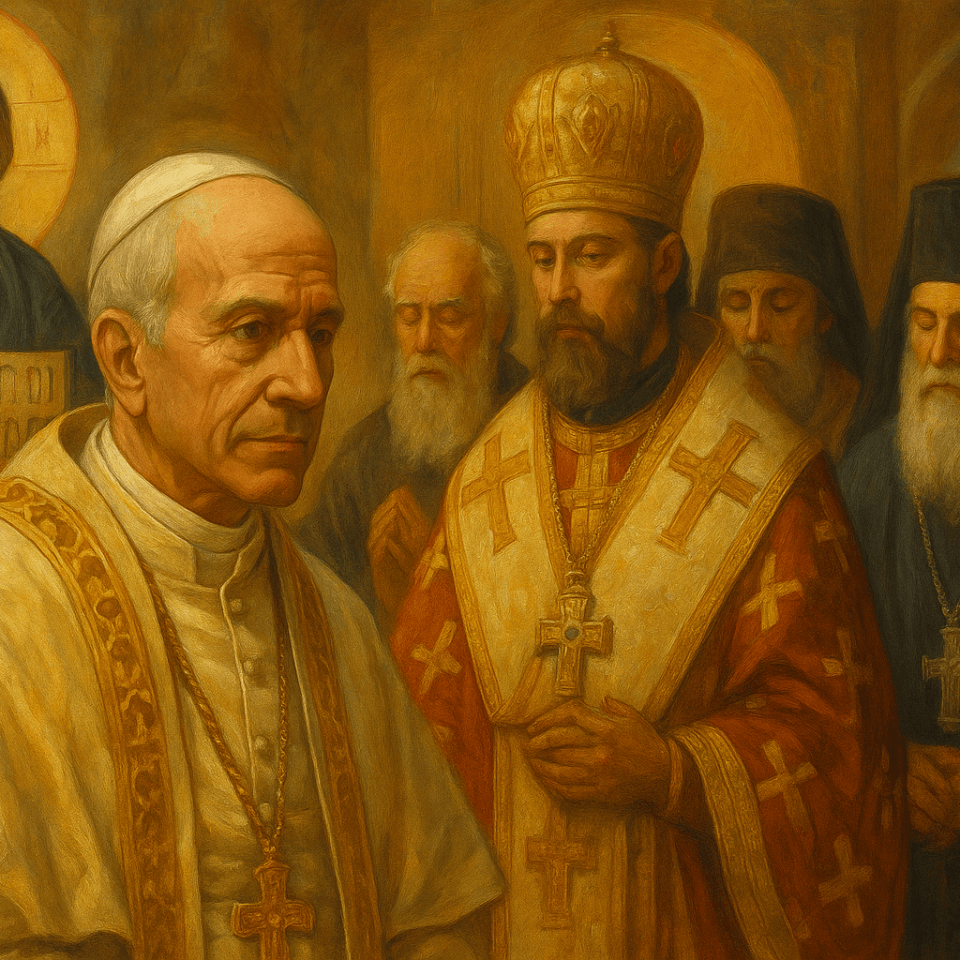On May 14, 2025, as part of the Jubilee of Hope, Pope Leo XIV delivered a powerful and moving address to the Eastern Catholic Churches.
His message was not only an expression of gratitude toward communities often forgotten but also a spiritual roadmap for the renewal of the universal Church. In an age marked by war, secularism, and internal confusion, Pope Leo offered a compelling vision rooted in unity, sacred beauty, and fidelity to tradition.
A Church that Breathes with Two Lungs
From St. John Paul II to Pope Francis, the idea that the Church must “breathe with both lungs”—East and West—has become a recurring theme. Pope Leo XIV not only echoed that phrase, he expanded it with clarity and conviction. He insisted that the Eastern Catholic Churches are not an “ornament” to the Church but an essential part of her soul.
These Churches, with their 23 distinct rites, have their own liturgies, theology, languages, and hierarchies—yet they remain in full communion with the Bishop of Rome. They are fully Catholic, fully apostolic, and deeply rooted in the faith of the Fathers.
Beauty That Evangelizes
One of the central pillars of the Pope’s address was the sacred beauty preserved in Eastern liturgies. Pope Leo emphasized that these Churches have faithfully kept the sense of divine mystery, the majesty of the liturgy, the strength of asceticism, the richness of silence, and the pedagogy of mystagogy.
He stated: “How great is the gift that Eastern Christianity can offer us today!”
No to Uniformity, Yes to Unity
Pope Leo XIV forcefully condemned all efforts to “Latinize” Eastern Catholics. Reaffirming Pope Leo XIII’s decree from 1894, he reminded the Church that any attempt to impose Latin customs on Eastern faithful is a serious abuse. Unity does not mean uniformity: the Church’s diversity of rites and disciplines is a blessing, not a threat.
The Pope also urged Latin bishops to welcome and support Eastern Catholics in the diaspora, encouraging them to retain their liturgical traditions, languages, and spiritual identity. The Church must not assimilate its Eastern faithful—it must honor and learn from them.
Martyr Churches
Pope Leo XIV spoke movingly about the suffering of Eastern Churches in war-torn regions like Syria, Ukraine, the Holy Land, Lebanon, the Caucasus, and Ethiopia. He called them “martyr Churches” and praised their perseverance.
Rather than offering political solutions, the Pope issued a moral call to action: Catholics must pray for, support, and never forget these heroic communities that bear witness to Christ in blood and fire.
Lessons for the Universal Church
The message of Pope Leo XIV has universal implications. He sees in Eastern Catholicism a remedy for many of the spiritual illnesses afflicting the Latin Church today. He is not asking for imitation, but for spiritual learning—from a tradition that places God at the center and embraces the Cross with dignity.
His speech also affirmed the need for genuine synodality. The Pope praised the Eastern Churches’ model of collegial governance and invited all bishops to become examples of communion, humility, and transparency. The East proves it is possible to live Tradition without rigidity, and renewal without rupture.
Conclusion
Pope Leo XIV has charted a way forward: to embrace the East not as a curiosity, but as a beacon. His message is not just for patriarchs—it’s for every Catholic who loves the Church. More than ever, East and West must walk together toward holiness, truth, and unity-in-diversity.
As St. John Paul II declared in Orientale Lumen:
“Contact with the Eastern tradition is essential for the Church to express more fully the depth of her catholicity.”
Eastern Catholicism is not the past. It is the foundation of the future.
Sources:
Pope Francis, Desiderio Desideravi (2022)
Pope Leo XIV’s Address to the Eastern Catholic Churches (May 14, 2025)
Second Vatican Council, Orientalium Ecclesiarum
Second Vatican Council, Unitatis Redintegratio
St. John Paul II, Orientale Lumen
Pope Leo XIII, Orientalium Dignitas (1894)





